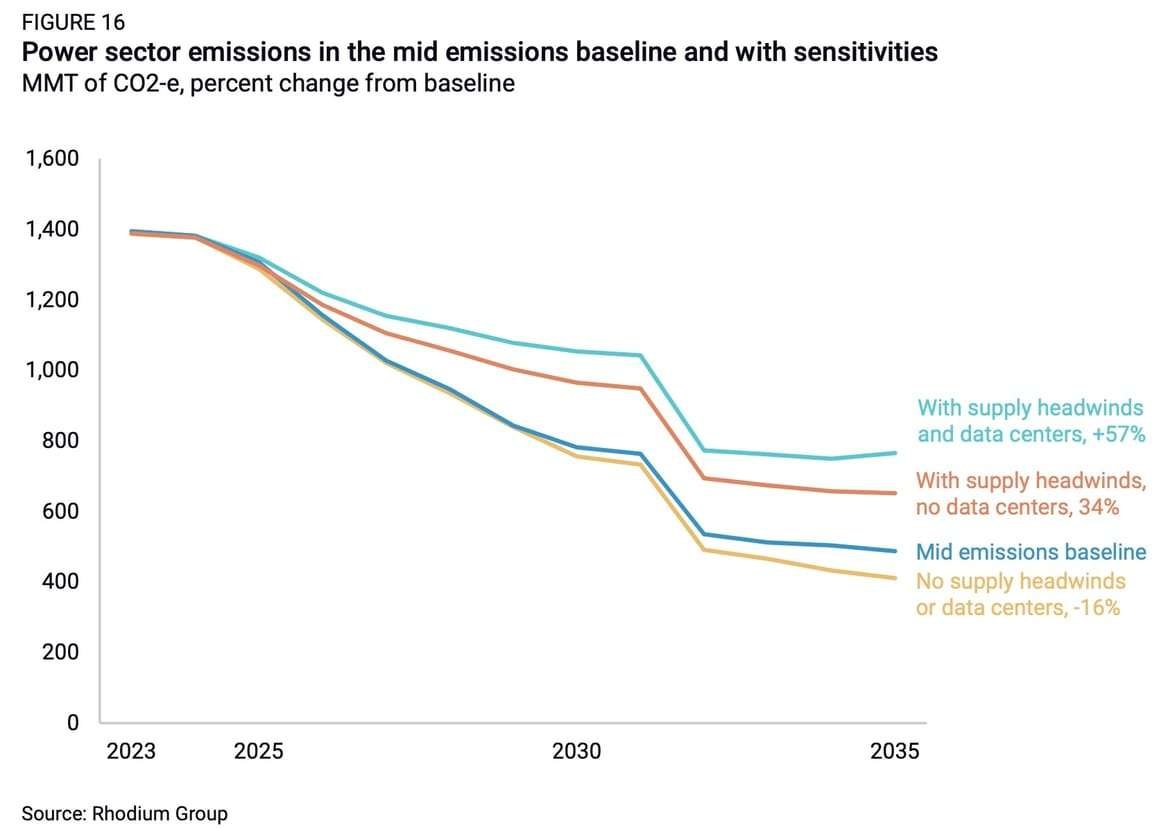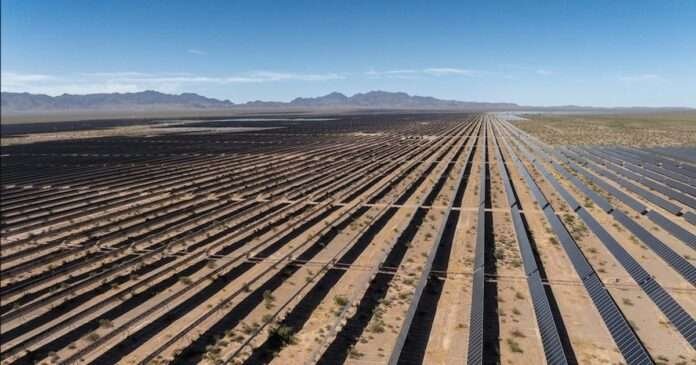

Uncertainties beyond politics: Data center growth and clean energy roadblocks
That’s not to say that Democratic control of the White House or Congress is enough to put the country on track to meeting its Paris Agreement goals. “The US will still have a long way to go, with a lot of policy action required, to advance to even deeper levels of decarbonization,” Rhodium’s report notes. Federal policy is a primary, but not controlling, factor in determining success or failure on that front.
Rhodium modeled a range of emissions cases, taking into account factors including the cost of clean energy versus fossil fuels, the pace at which clean energy technologies can be deployed, and the underlying speed of economic growth, which determines demand for energy of all varieties.
The power sector remains “the nexus for decarbonization in this report,” King said. Electricity generation is the second-largest source of U.S. greenhouse gas emissions, and the rate of clean energy adoption in the electricity sector will determine how quickly efforts to electrify transportation, industry, and building heating will clean up those sectors as well.

The prospects of rapid power-sector emissions declines depend greatly on factors that lie beyond the federal government’s direct control, however.
One big X factor is the pace of growth in demand for electricity. Rhodium Group’s model already factored in expected power demand from electric vehicles and building heating, King said. “That’s predictable long-term load growth, which utility and grid planners have time to prepare for.”
But since its 2022 analysis, Rhodium’s model has had to incorporate “unanticipated surges” in additional demand from the massive number of data centers being proposed to provide computing power for artificial intelligence (AI) services, as well as from the tens of billions of dollars of new solar, battery, and EV factories spurred by the Inflation Reduction Act.
Another uncertainty lies in the “headwinds” that are holding back the rapid deployment of solar and wind power supplies to meet growing electricity demand. The U.S. deployed a record 19 GW of utility-scale solar and 6.6 GW of utility-scale storage last year, helping to drive down power-sector emissions. But that growth rate, especially given the lackluster addition of just 6.4 GW of wind power, doesn’t bring the U.S within reach of its Paris Agreement commitment.
Even maintaining this slower-than-necessary pace of growth “may be a struggle as developers face challenges” including long interconnection queues and insufficient capacity on the country’s transmission grids, as well as increasing local opposition to siting and permitting clean energy projects, the report notes. If rising demand isn’t met with clean electricity, it’s more likely that U.S. utilities will keep coal plants open longer and build new fossil-gas-fired power plants to make up the difference.
The following chart indicates just how significantly the trends in data center demand and supply side headwinds could alter Rhodium’s midrange power-sector emissions reduction forecasts.

These variables have led Rhodium to cast “wide uncertainty bars around a lot of these outcomes” for U.S. power-sector emissions reductions, King said. Still, despite the uncertainty of the status quo, what’s clear is that the odds of the country hitting any of its decarbonization goals are far higher if key climate regulations remain intact.

Source link
#Keeping #carbon #cuts #track #hinge #upcoming #election







